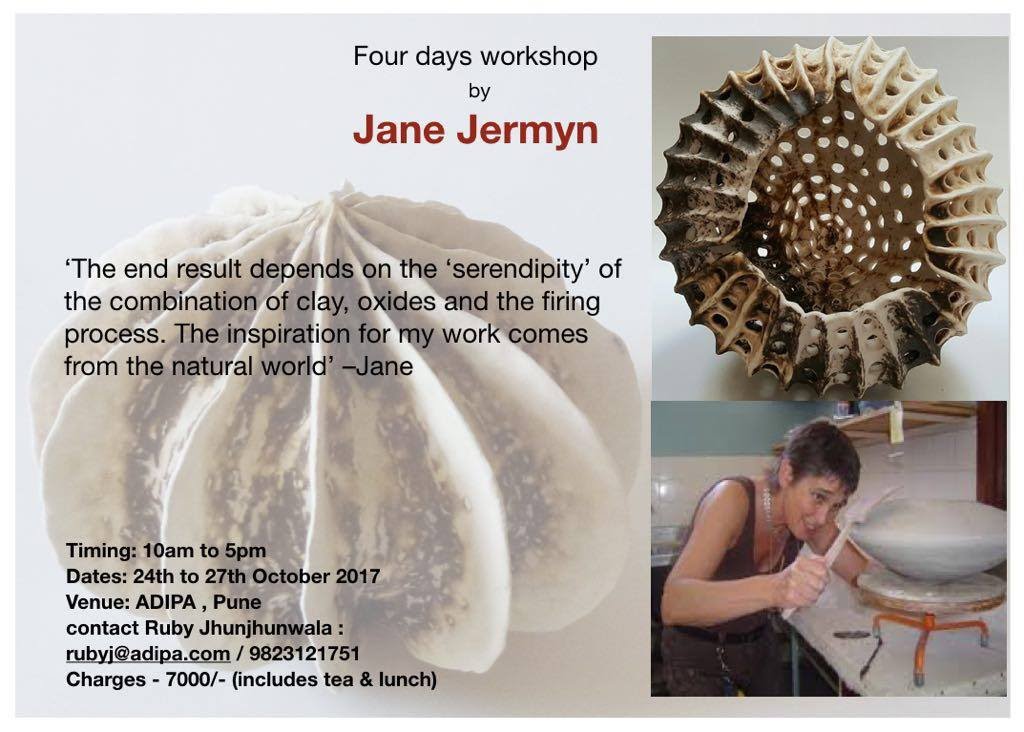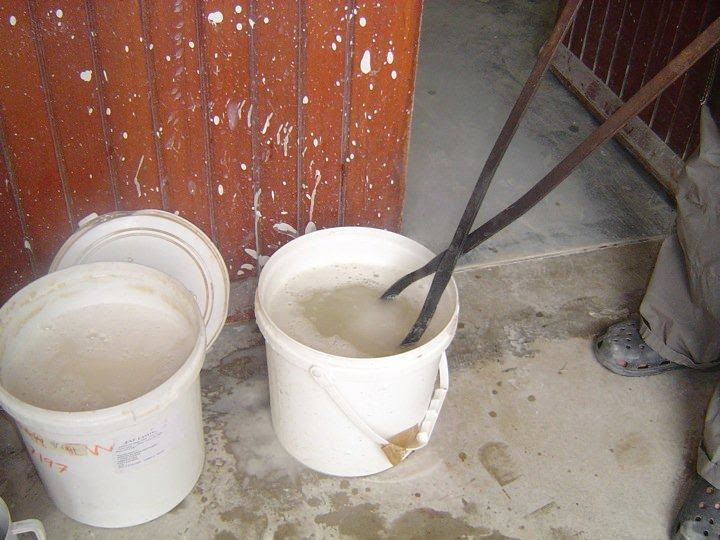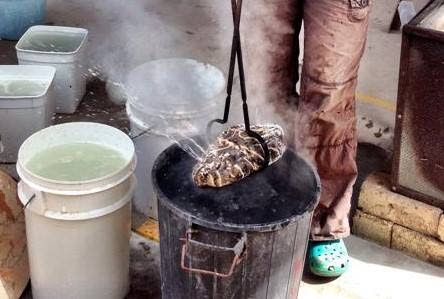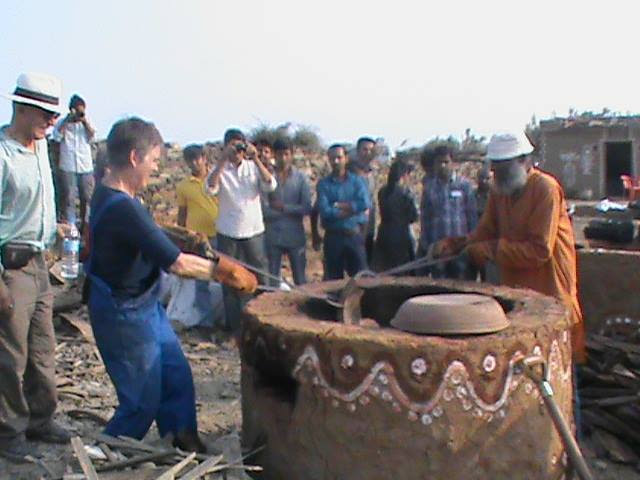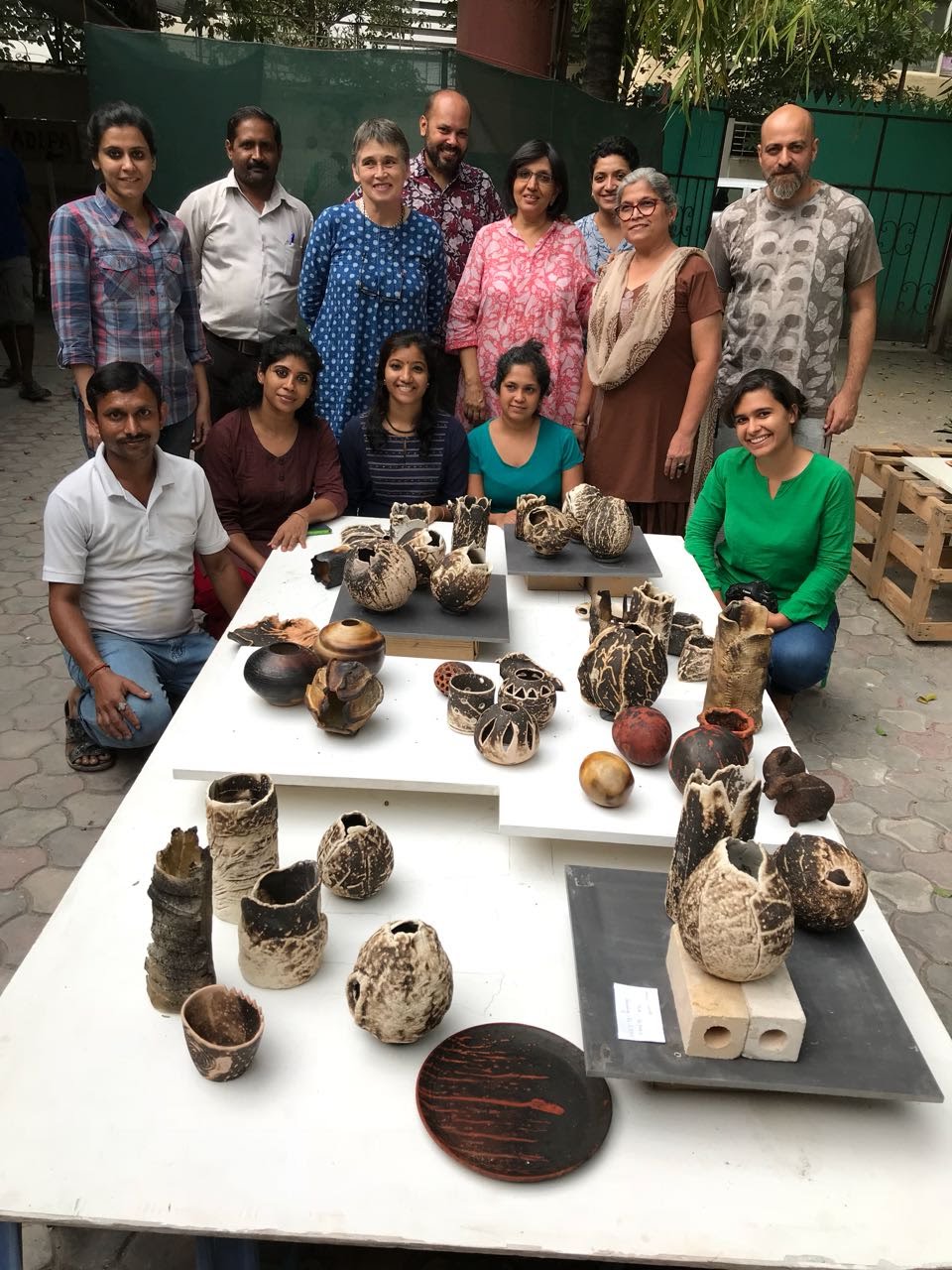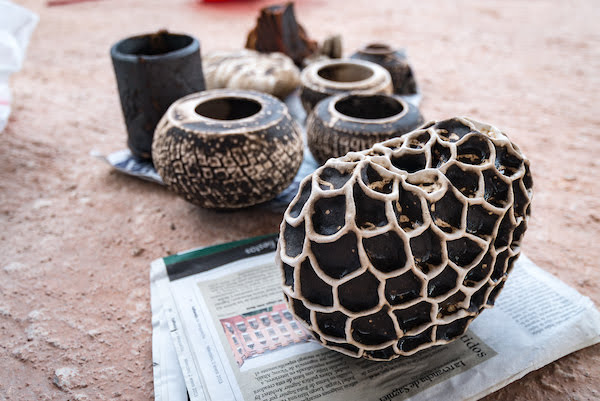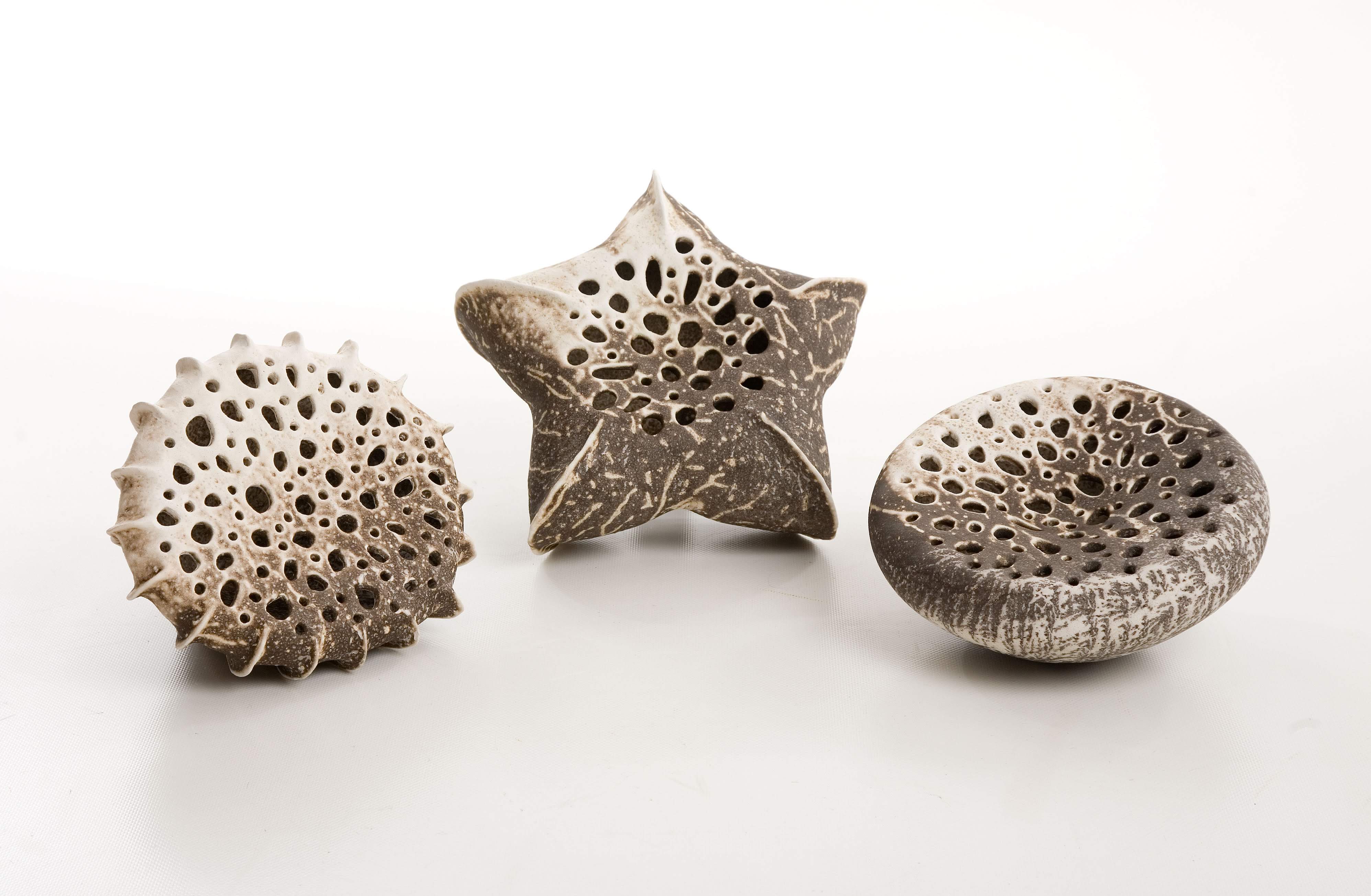Obvara is an old Eastern European firing method that I learned in Belarus in 2009. The work is taken from the kiln from 700 - 900C depending on clay and thickness of work, and plunged into a yeast/flour/water mixture and then immediately into cold water. It is an organic-like purely decorative finish.
The work should be bisque fired to around 1000 C. I find a pale coloured raku clay works best - though when in South Korea people did use a porcelain clay which withstood the thermal shock and worked very well. Also some people use coloured slip before bisque firing as a background colour.
I do not usually burnish my work but there are some lovely effects using a burnished terra sig finish.
I then fire the work in a raku kiln to around 850 C / 1550 C - the temp can vary depending on thickness and weight of work and your kiln and thermocouple readings - you might need to experiment a bit to get the temp to suit your work and the finish you require - and then dip the work into the obvara mixture and immediately into a bucket of cold water which stops the mixture 'cooking' and sets the pattern.
If you don't like the pattern the piece can be re-fired as the obvara pattern burns off.
Enjoy experimenting!!
This is my version of the obvara liquid:
Mix 1 kg flour / 1 or 2 sachets dried yeast / 1 tablespoon sugar and 8 - 10 litres warm water - leave covered in a warm place for 3 days, (though in warmer countries it seems to work sooner) - stir frequently.
Thanks to a Facebook Page, Social Media has helped preserve an ancient technique that was in danger of disappearing
https://www.facebook.com/Obvara-firing-technique-372511962812858/

